Before making the classification by area of the largest grasslands in the world, it is important to know what actually grasslands are. Grasslands are vast areas in which natural vegetation consists of lush-green grass running across several miles. Grasslands are characteristic of areas where there is a balance between the amount of rainfall: not too much as to support a forest and not so less to make the land barren. It is characteristic of semi-arid and semi-humid areas.
They are normally found between forest and deserts and are plane stretches of land covered with grass.
Before moving forward we need to see the types of grassland. Savanna, steppe, prairie and pampas, you might have come across one or more of these terms but probably don’t know the literal meaning of these terms.
It might amaze you:
All of the mentioned terms are basically different names given to grasslands in various different areas around the globe. South Americans address grasslands by Pampas. In Midwestern United States, they are addressed as Prairies. On other hand, Central Eurasian grasslands are known as Steppes and Africans term grasslands as Savannas.
You might be astounded by this fact:
Grasslands cover about one fourth of our mother Earth’s area.
Considering their importance, let us have a look on the top 10 largest grasslands in the world:
10-Hulun Buir Grassland
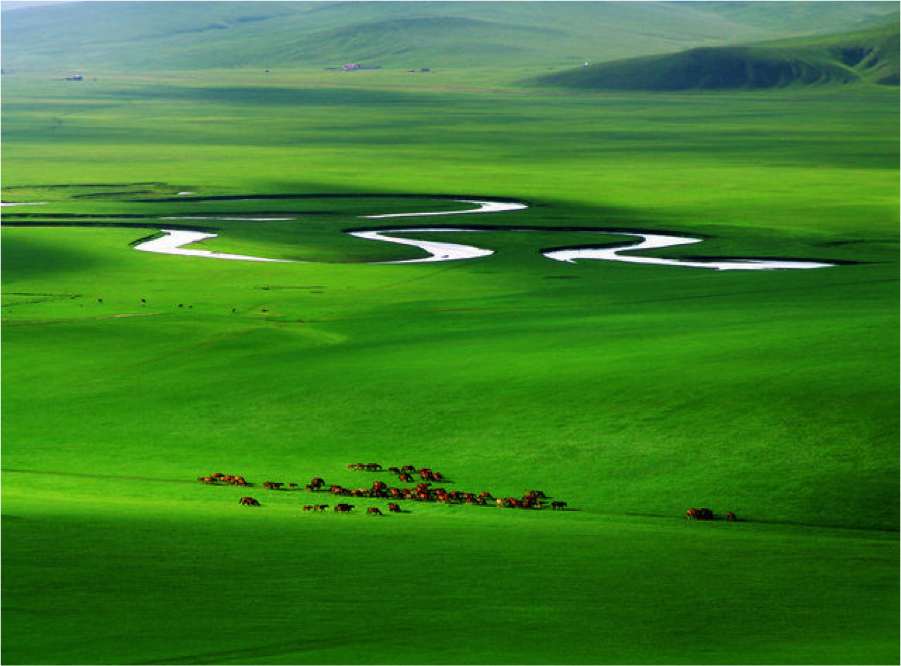
Situated in the Mongolian region, this grassland stretches over a vast area of 93,000 sq. km. Its name is characteristic of the two lakes it is named after: Hulun Lake and Buir Lake. It is surrounded by almost 3000 rivers and 500 lakes. Hulun Buir is amongst the top 3 most beautiful grasslands in the world. It is known as “The Grass Kingdom” because of the vast variety of vegetation it possesses. Approximately 120 different kinds of pastures are found in this grassland. A seemingly endless lush-green carpet with colourful wild flowers makes the view of this grassland spectacular.
9-Great Hungarian Plain

Great Hungarian grassland stretches across South-eastern Hungary, Eastern Croatia, Northern Serbia and Western Romania. It covers more than 100,000 sq. km. About half of this area is in Hungary whereas the remaining part of this grassland is shared by Romania, Serbia and Croatia. The Hungarian prairies are widely utilized as cultivable land for crops, vegetables and fruits. There is a proper system of irrigation and flood-control that has made this utilization possible. The climate here is continental. The Romanian part of this grassland is one of the major grasslands in Europe considering the fact that there is a lack of grasslands in Europe. It consists of 28 different types of species of plants. This stretch of land is also used for small-scale farming.
8-Manchurian Plain
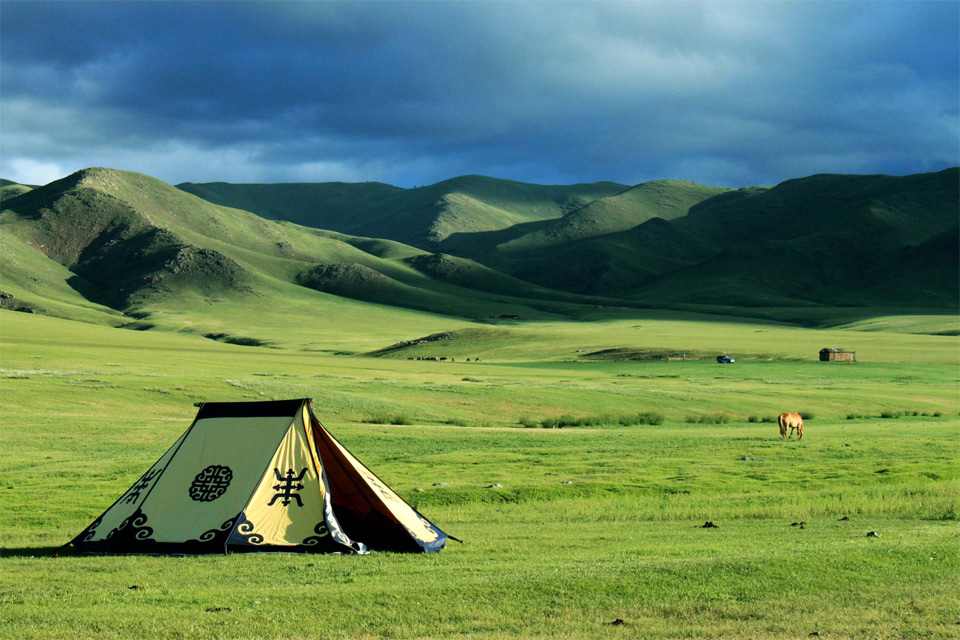
Sitting at the heart of the central lowland in North-eastern China, the Manchurian Plain, also known as Sung Liao Plain spreads over an area of 350,000 sq. km. The sea level of this grassland is very low. No part of this grassland is above 1000 ft.
It might be of particular interest:
Most part of this grassland area is covered by black fertile soil which comes down from the surrounding ranges of Da Hinggan on the west, Xiao Hinggan on the north and Changbai on the East. Towards the south, the Gulf of Liaodong surrounds it. Some major rivers related to this grassland are Sungari River, the Nen River and the Liao River. Government of China has utilized this vast grassland in many positive ways. It plays a vital role in the soybean production of China. In addition to this, corn, rice, wheat and other important crops are also cultivated in this grassland.
This grassland is so vast that three industrial cities are situated on this vast stretch of grassland: Harbin, Shenyang and Changchun.
7-Llanos Grasslands
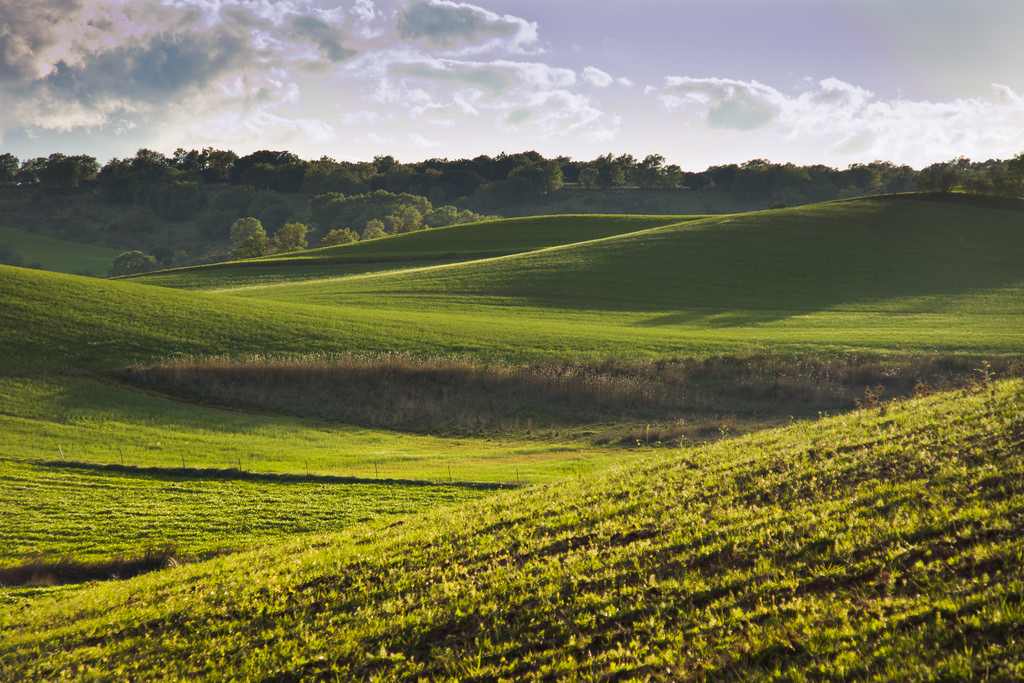
Llanos is basically the Spanish word for “plains”. The Llanos stretch of grasslands are located across northern South America. They also enter western part of Venezuela and some part of North eastern Colombia. The Llanos grasslands have made into the biggest grasslands due to their vast area of 570,000 sq. km. These grasslands are encompassed by the Andes Mountains, Guiana Highlands and the famous Amazon River.
Llanos has two distinguishable areas of grasslands: areas that are considerably wet due to seasonal flooding and some relatively drier portions. The wet parts are populated by swampy grassy regions. On the other hand, long-stemmed grass covers most of the drier regions.
6-Pampas of Argentina, Uruguay and Brazil
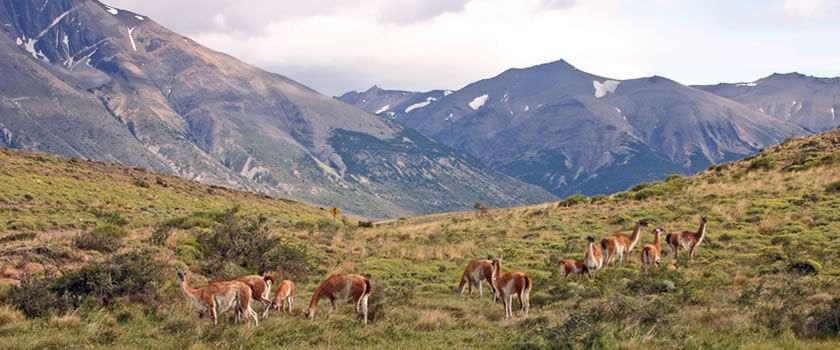
The vastness of these grasslands can be judged by the fact that it touches almost three countries. Its area of 750,000 sq. km comprises of Argentine provinces of Buenos Aires, La Pampa, Santa Fe, Entre Rios and Cordoba. It also covers a large area of Uruguay and covers a vast Brazilian part i.e. Rio Grande do Sul.
The warm temperate/climate, mild and even distribution of rain throughout the year makes this stretch of grassland very viable for agriculture. Pampa Grass is one of the most distinct type of grass found in these regions. The vegetation in Pampas, however, is often destroyed by wildfires. Susceptibility to flooding also hinders the utilization of this grassland region.
Practically, grassland region towards south and west of Buenos Aires is used for cultivation. Growing vineyards plays an important aspect in this region’s cultivation.
5-Kazakh Steppe

The Kazakh steppe, as its name suggests, is a large grassland region in Northern Kazakhstan. It also extends to some portions of Russia that are adjacent to Kazakhstan. The Kazakh steppe extends to a wide region having an area of 804,500 sq. km. This region lies south of the famous Ural Mountain Range. This range is famous because it acts as the natural dividing line between the two continents: Europe and Asia. This steppe slopes up moving towards the north. Amazingly, this steppe is surrounded by further steppes like Pontic Steppe and Emin Valley Steppe.
This steppe region experiences extreme cold weather i.e. as low as 18 degree Celsius. On other hand, in months of June and July there is a moderate weather with temperatures ranging from 20 to 26 degree Celsius.
4-Australian Savanna
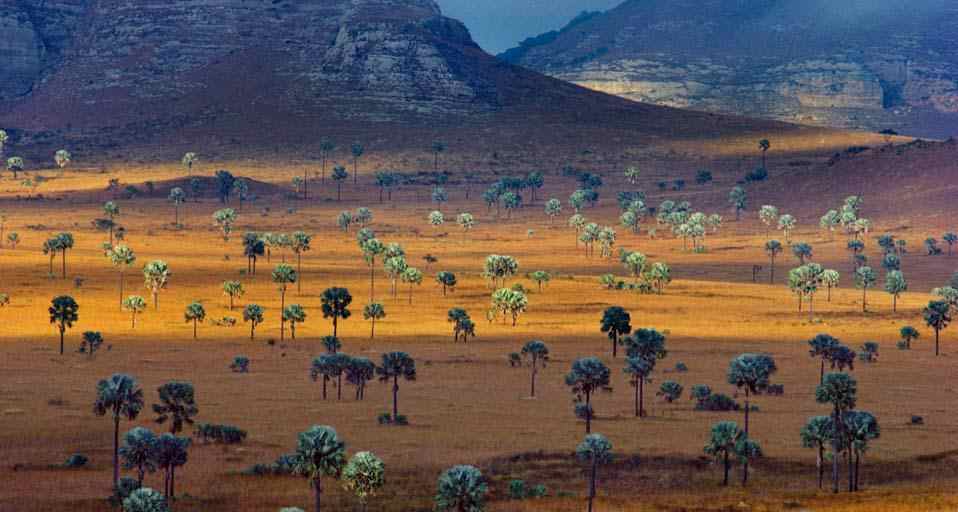
The Australian Savanna, also known as Australian Tropical Savanna, is situated in Northern Australia. Its area stretches from Broome all the way to Townsville. Having an area of 1,769,160 sq. km, this savanna experiences extreme temperatures. Summer fires are common to Australian Savannas. Wildfires occur in the drier seasons i.e. May to October. This particularly becomes the reason of lack of dense forestation in this area.
It might astound you:
Temperatures in this savanna can reach as high as 50 degree Celsius! However, average temperature in warm seasons is around 30 degree Celsius.
Along with shrubs and dense grass, saltwater crocodile is a distinguishable animal that resides in the lakes adjacent to this savanna. The saltwater crocodile is famous for its extended length i.e. even 7 to 8 meters long!
See Also: Polish Photographer Takes a Drone to K2, Returns With Stunning Pictures
This savanna is unique in every aspect. Vegetation types, animals (some unique animals that can’t be found elsewhere reside in this savanna) and climate; every aspect is unique for this savanna compared to other savannas. This uniqueness is particularly due to the unique location of this savanna which unlike other savannas is not near the equator.
3-Canadian Prairies

Western Canada is home to the Canadian Prairies. This Prairie stretches from the north of Edmonton and covers 3 provinces towards the east of Manitoba-Minnesota border. The area of the Canadian Prairies is an amazing 1,780,650.6 sq. km. This extremely large area makes it the 3rd in the list of the largest grasslands in the world.
This prairie has three types of soil regions:
- Brown soil areas
- Dark brown soil areas
- Black soil areas
In the brown soil regions, semi-arid climate prevails. In the dark brown and black soil regions, humid continental climate prevails. Prairie areas towards Manitoba are the coldest with the possibility of thunderstorms and tornadoes in spring and summer.
The Canadian Prairies are unique in the elevation aspect relative to sea level. The elevation ranges from 0 feet to 12,293 feet.
2-Great Plains of North America
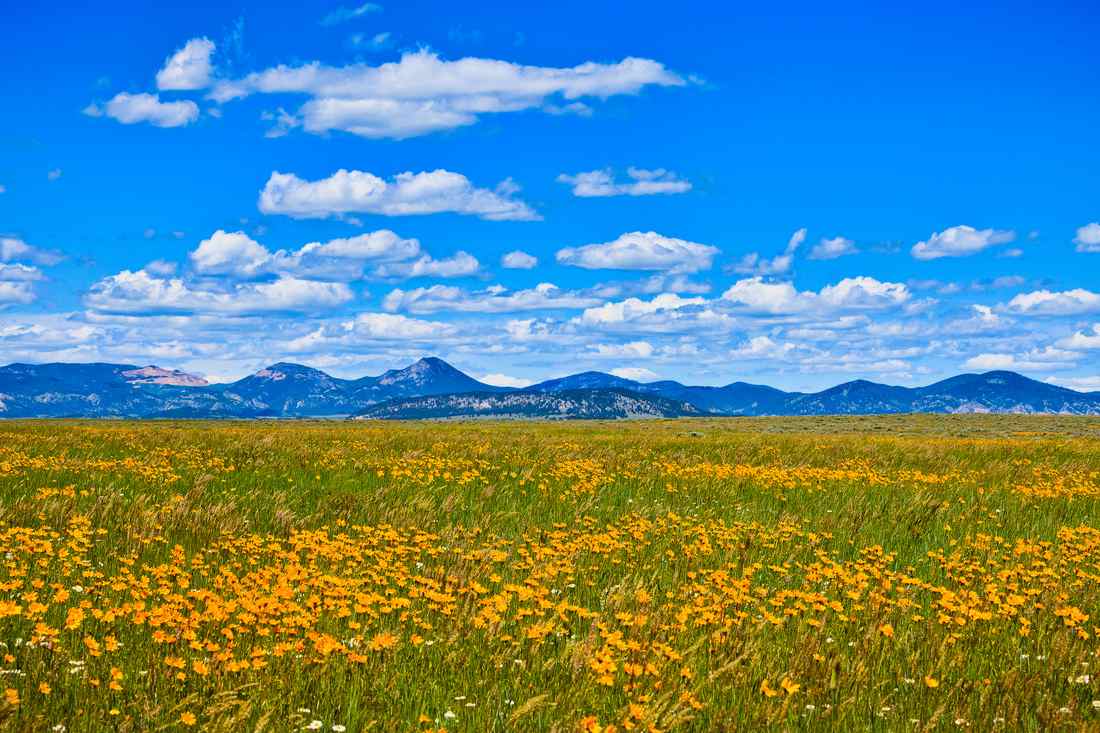
The vastness of the Great Plains of North America is inexplicable! These grasslands almost occupy one-fourth of the area of United States. It stretches over almost ten US states including Montana, North Dakota, South Dakota, Wyoming, Nebraska, Kansas, Colorado, Oklahoma, Texas, and New Mexico. This grassland’s area is mind-boggling: 2,900,000 sq. km! The Great Plains are surrounded by the mighty Rocky Mountains on the west, Mackenzie River in the North and Rio Grande towards the South. The eastern side is surrounded by the well-known Canadian Shield.
Sudden changes in temperature with a continental climate is a major characteristic of the Great Plains. The sudden change in temperatures is due to a unique, warm and dry wind that blows. This wind can raise the temperatures up to 17 to 22 degree Celsius within few hours.
1-Nagqu Grassland in Tibet
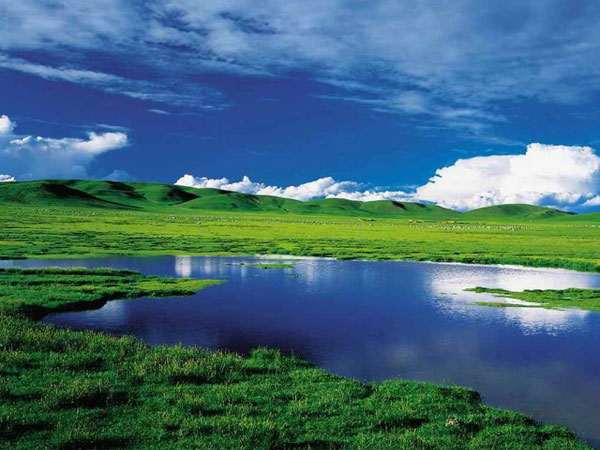
This expansive and seemingly boundless region of grassland stretches over an area of 40,000,000 sq. km… 40 million square kilometres! Rising as high as 4500 meters, this grassland is unique due to its high elevation. This grassland is not generally cultivable but a small part of its eastern site is cultivable. This grassland is located between Tangula Mountain Range and Nyaingentanglha Range.
Since there is no industrial development in this grassland region, it is home to its own natural beauty. The Nagqu grassland is home to Tibetan antelopes, and some rare animals like yaks.
The maximum temperature in summer season is 23 degree Celsius whereas the lowest temperature is about -2 degree Celsius.
Below are some other famous grasslands, but in terms of largest grasslands, above are ranked as per there order.
- Pawnee National Grasslands
- Comanche National Grassland
- Thunder Basin National Grassland
- Buffalo Gap National Grassland
- Little Missouri National Grassland